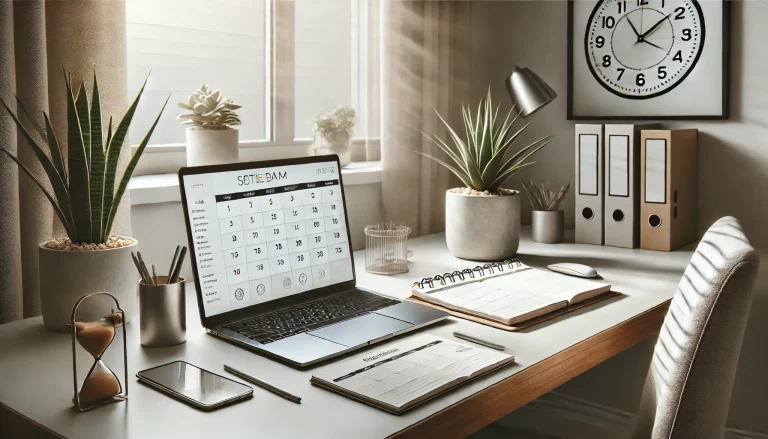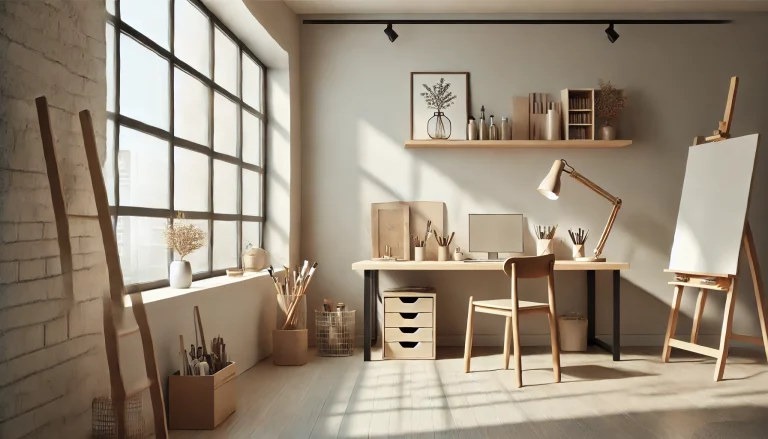

In today’s fast-paced world, creativity can sometimes feel stifled by the constant flow of information, distractions, and clutter. Minimalism offers a way to clear away the distractions and create the mental space needed for creative thinking. By simplifying your environment and daily habits, you can enhance your creativity and make room for new ideas.
In this article, we’ll explore how embracing minimalism can boost your creativity and help you unlock your full creative potential.
A cluttered space can lead to a cluttered mind. When your physical environment is full of unnecessary items, it can be difficult to focus or think clearly. Minimalism encourages a clean, organized space, which helps reduce mental overload and provides a more peaceful, open environment for creative ideas to flow.
How to create a clear space:
By simplifying your space, you create room for new ideas and creative thinking.
Minimalism isn’t just about physical clutter — it’s also about mental clutter. When your mind is filled with thoughts, worries, and distractions, it’s difficult to be creative. Minimalism helps you reduce mental clutter by encouraging mindfulness, focus, and self-awareness.
How to reduce mental clutter:
Reducing mental clutter allows you to be more present and open to new creative ideas.
Minimalism encourages you to simplify your creative process, allowing you to focus on what truly matters. By eliminating unnecessary steps, tools, or distractions, you can streamline your workflow and make the most of your creative energy.
How to simplify your work:
By simplifying your work process, you can create more freely and efficiently.
Minimalism encourages you to find beauty in simplicity. When you reduce the noise and distractions in your life, you can better appreciate the subtle details and small moments that spark creativity.
How to find inspiration in simplicity:
By embracing simplicity, you open yourself up to the quiet, subtle inspirations that fuel your creativity.
We live in an age of information overload, where we are constantly bombarded with news, social media, advertisements, and emails. This constant stream of information can overwhelm your mind and hinder creative thinking. Minimalism helps you limit unnecessary information and focus only on what’s important.
How to limit information overload:
By limiting information overload, you create space for your mind to think creatively without constant distractions.
Minimalism teaches you to say no to the things that don’t align with your creative goals. Whether it’s unnecessary meetings, obligations, or commitments, learning to say no allows you to protect your time and energy for what truly matters.
How to embrace the power of “no”:
By saying no, you free up mental and emotional energy for creative work.
Creativity thrives in an environment of playfulness and experimentation. Minimalism encourages you to simplify your life so you can make time for fun, exploration, and creative expression without the pressure of productivity.
How to create space for play:
By creating space for play, you open up new avenues for creativity and innovation.
Adopting a minimalist mindset means simplifying your thought process and focusing on what truly matters in your creative work. It’s about letting go of the excess and honing in on the essential elements that make your work unique and impactful.
How to develop a minimalist mindset:
A minimalist mindset allows you to focus on what’s most important and fosters deeper, more meaningful creativity.
Minimalism encourages self-reflection, which is key to nurturing your creative growth. By taking time to reflect on your ideas, experiences, and work, you can gain clarity and insight into what’s working and what needs improvement.
How to practice self-reflection:
Self-reflection allows you to learn from your creative experiences and evolve as an artist.
Minimalism isn’t just about reducing the physical clutter in your life; it’s also about simplifying your mental and emotional space to enhance creativity. By decluttering your environment, reducing distractions, and focusing on what truly matters, you can unlock your creative potential and bring your best ideas to life.
Remember, creativity thrives in simplicity. By embracing minimalism, you give yourself the freedom to think, create, and explore without the burden of excess.